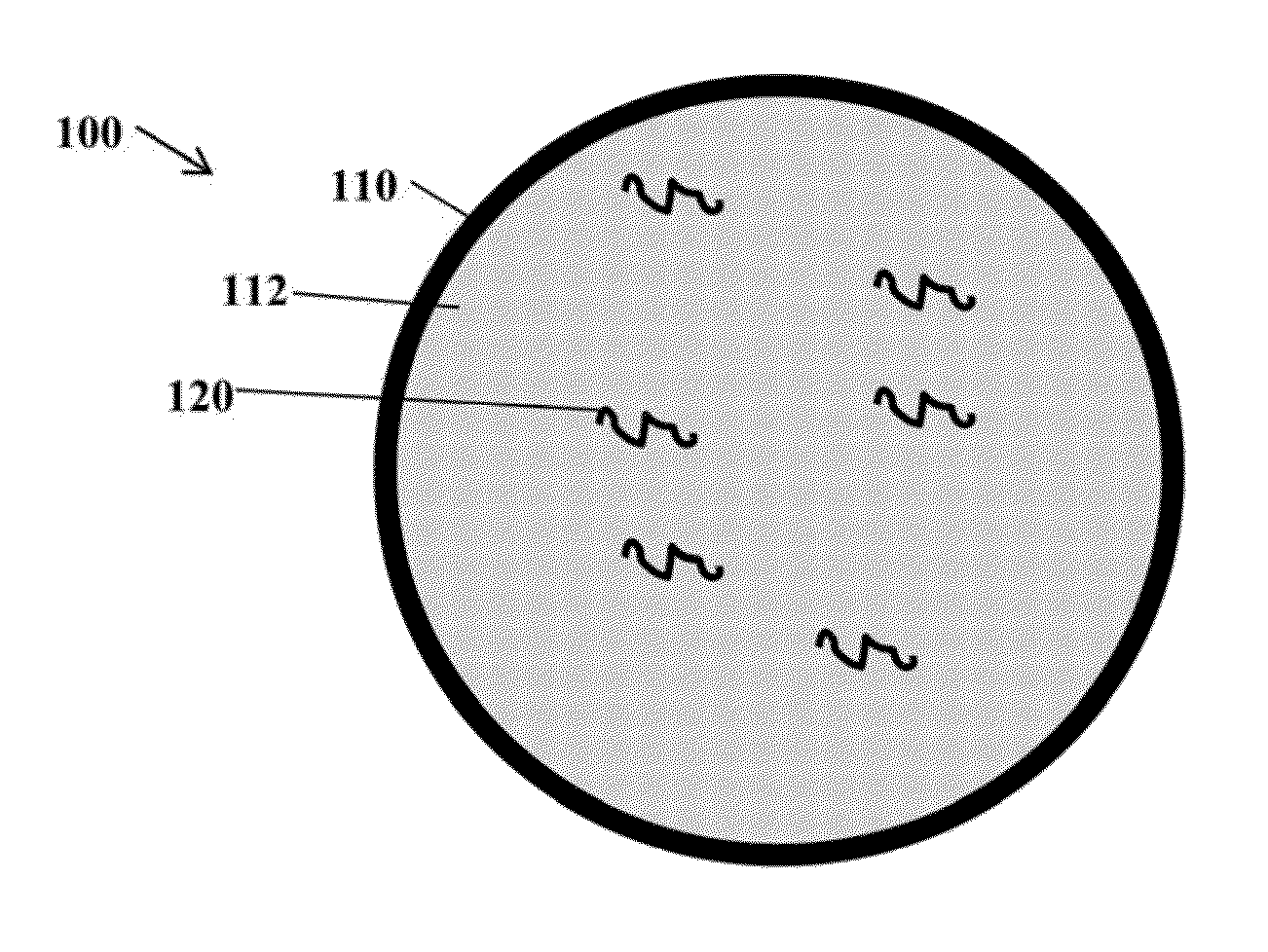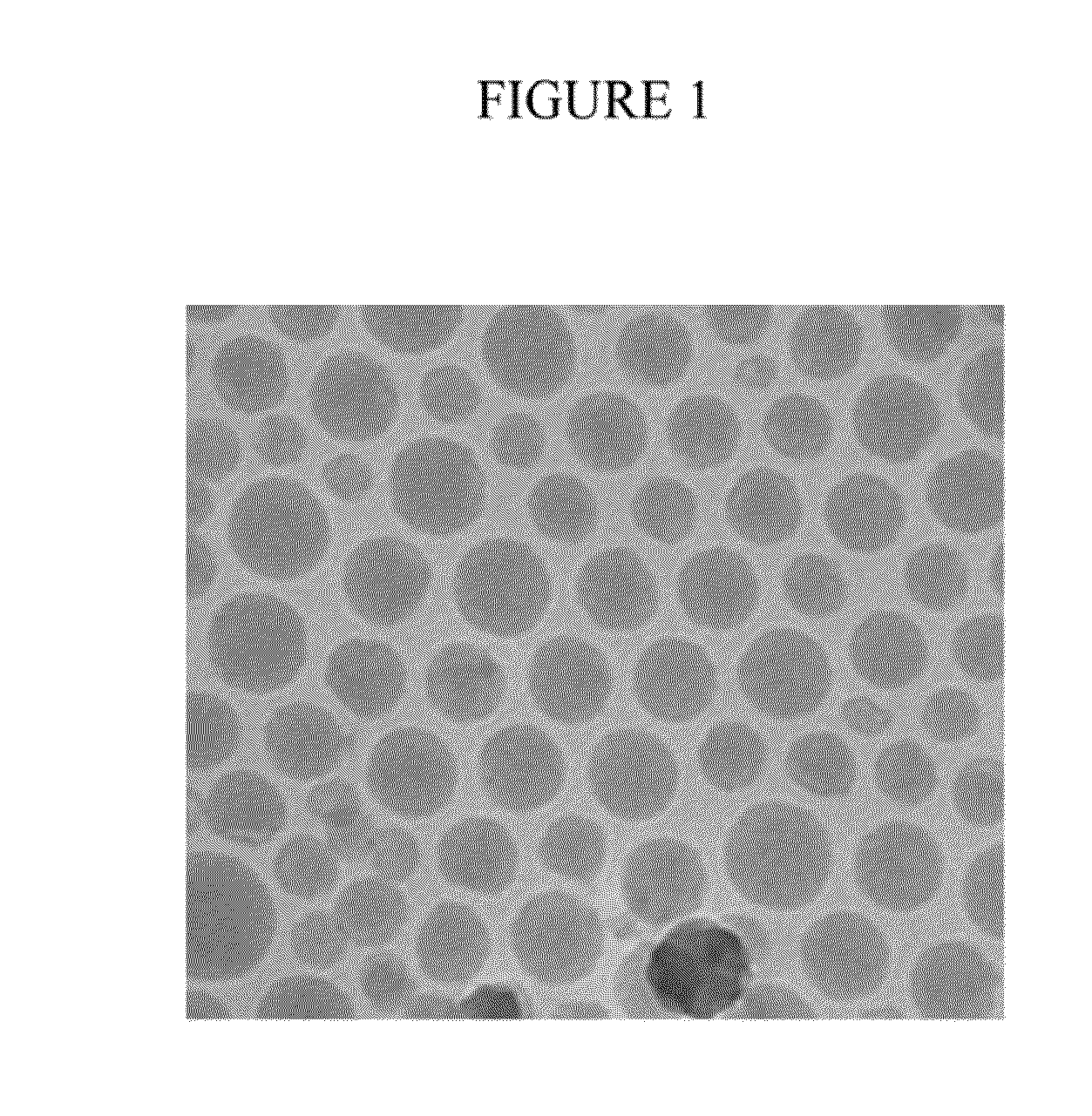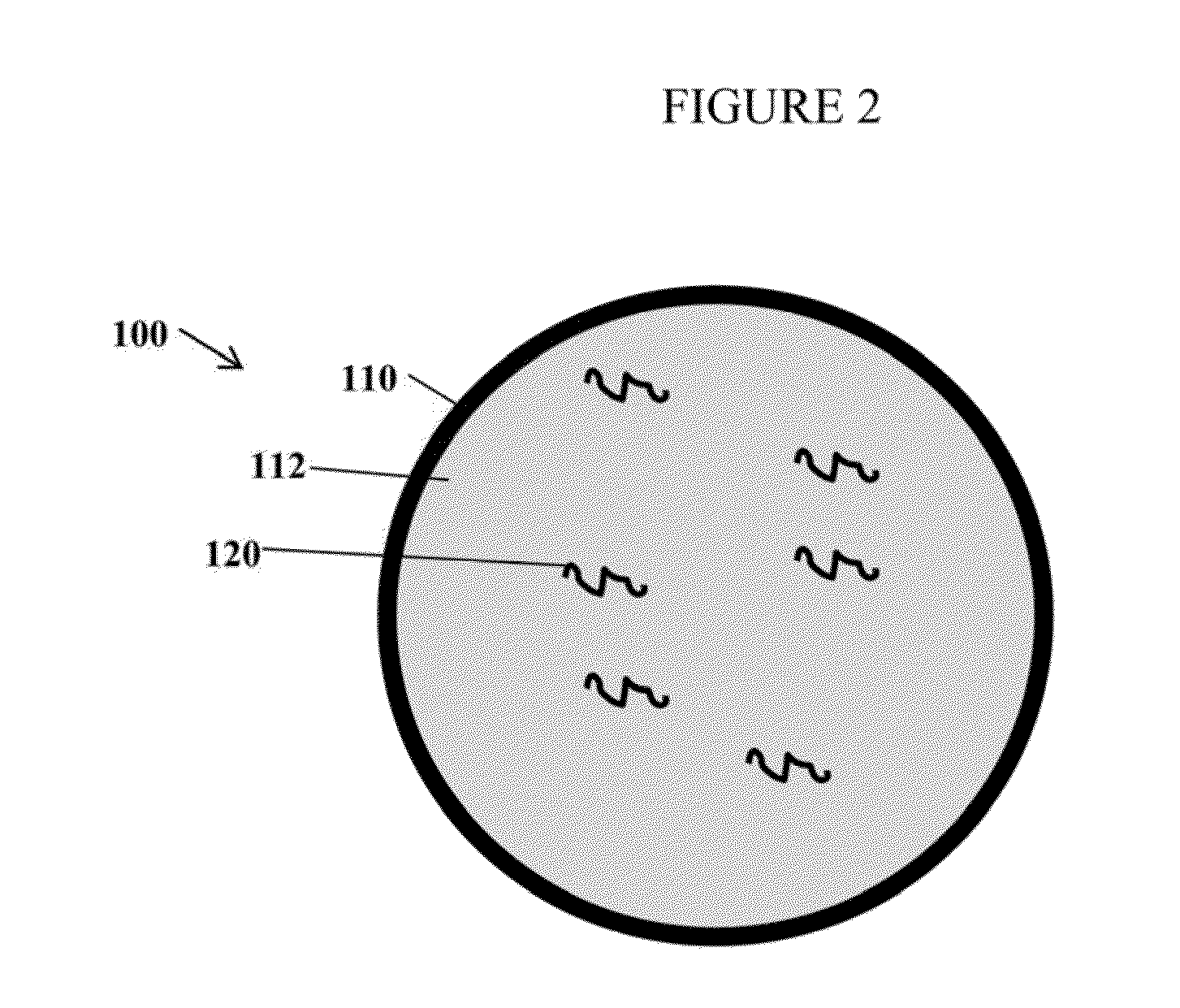Compositions and methods for delivering messenger RNA
a messenger and composition technology, applied in the field of compositions and methods for delivering messenger rna, can solve the problems of limited success in gene therapy, mental impairment or death, etc., and achieve the effect of meliorating one or more symptoms of the diseas
- Summary
- Abstract
- Description
- Claims
- Application Information
AI Technical Summary
Benefits of technology
Problems solved by technology
Method used
Image
Examples
example 1
[0279]This Example describes expression of mRNA encoding a luciferase reporter gene in mice. The mRNA was encapsulated within nucleic acid-lipid particles (referred to as LNP) which were injected into mice.
LNP Preparation
[0280]The experiments reported in this example used a firefly luciferase mRNA, fully modified with pseudouridine and 5-methylcytidine replacing uridine and cytidine, respectively. The mRNA was formulated into LNP with lipids at a lipid-to-drug ratio of 13:1. The LNP formulation used in these studies had the following lipid composition: PEG-lipid (PEG2000-C-DMA or PEG2000-C-DSA) (1.6 mol %); Dilinoleylmethoxypropyl-N,N-dimethylamine (1-B11) (54.6 mol %); cholesterol (32.8 mol %); and DSPC (10.9 mol %). LNP were prepared at a 3.5 mg (mRNA) scale, using a method adapted from Jeffs et al, Pharmaceutical Research, Vol. 22, No. 3, 362-372 (2005). Buffer exchange was then performed via tangential flow ultrafiltration (TFU). LNP were concentrated to ˜5 mL and then diafilter...
example 2
General Procedures
LNP Preparation:
[0288]The experiments described in this Example 2 used a firefly luciferase mRNA (“mLuc”), fully modified with pseudouridine and 5-methylcytidine replacing uridine and cytidine respectively. The LNP formulation used in these studies have the following general lipid composition (molar ratios): PEG-lipid (PEG2000-C-DMA (1.6 mol %); appropriate aminolipid (54.6 mol %); cholesterol (32.8 mol %); and DSPC (10.9 mol %). A lipid stock was prepared with the appropriate lipids dissolved in ethanol (12.6 mM). The mLuc stock was made up in a 40 mM EDTA buffer at 0.366 mg / mL in 40 mM EDTA. The two stocks were combined using the Jeffs et al method (Pharm. Research (2005), 22(3), pages 362-372), blending in a t-connector and diluted into Phosphate Buffered Saline, pH 7.4. Buffer exchange was then performed via overnight bag dialysis against 10× volume of PBS. After dialysis, LNP were concentrated by centrifugation in Vivaspin-6 or Vivaspin-20 units (MWCO 100k) fr...
example 3
Preparation of Cationic Lipid (111)
[0303]
[0304]A solution of (3Z,13Z)-7-((Z)-hex-3-en-1-yl)-10-((Z)-non-3-en-1-yl)nonadeca-3,13-dien-9-ol (110, 700 mg, 1.44 mmol) in CH2Cl2 (10 mL) was successively treated with 5-bromovaleric acid (390 mg, 2.16 mmol), EDC (413 mg, 2.2 mmol) and DMAP (10 mg) and stirred (30° C., 18H). The solution was diluted with CH2Cl2 and washed with saturated NaHCO3 and brine, dried (MgSO4), filtered and concentrated. The crude material was taken-up in dimethylamine in ethanol (10 mL as a 2M solution) placed in a sealed vessel and heated (80° C., 5H). Once complete the solution was concentrated and the crude material was subjected to chromatography (EtOAc) to yield 111 (294 mg, 22%) as a pale yellow oil. 1H NMR (400 MHz, CDCl3, δH) 5.54-5.28 (m, 8H), 5.15-5.05 (m, 1H), 2.27-2.22 (m, 4H), 2.20 (s, 6H), 2.10-1.96 (m, 16H), 1.71-1.44 (m, 9H), 1.43-1.25 (23H), 0.95 (t, 6H), 0.87 (t, 6H).
[0305]The intermediate compound (3Z,13Z)-7-((Z)-hex-3-en-1-yl)-10-((Z)-non-3-en-1...
PUM
| Property | Measurement | Unit |
|---|---|---|
| mol % | aaaaa | aaaaa |
| mol % | aaaaa | aaaaa |
| mol % | aaaaa | aaaaa |
Abstract
Description
Claims
Application Information
 Login to View More
Login to View More - R&D
- Intellectual Property
- Life Sciences
- Materials
- Tech Scout
- Unparalleled Data Quality
- Higher Quality Content
- 60% Fewer Hallucinations
Browse by: Latest US Patents, China's latest patents, Technical Efficacy Thesaurus, Application Domain, Technology Topic, Popular Technical Reports.
© 2025 PatSnap. All rights reserved.Legal|Privacy policy|Modern Slavery Act Transparency Statement|Sitemap|About US| Contact US: help@patsnap.com



